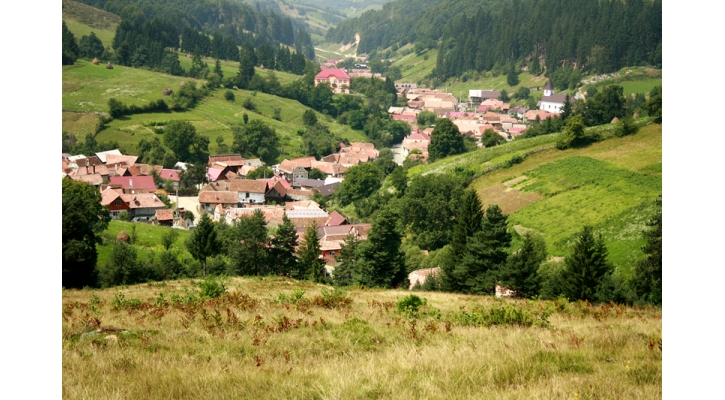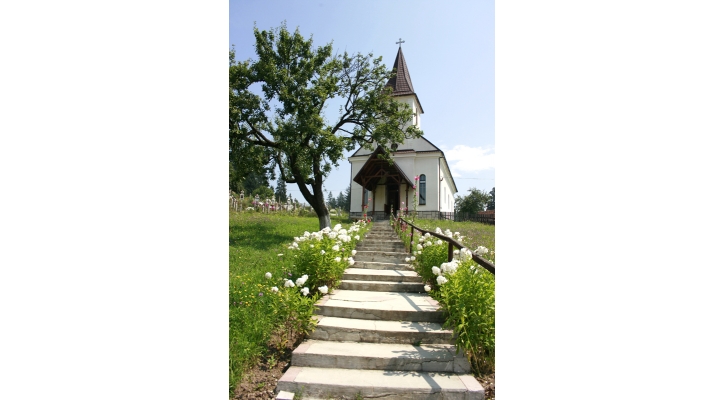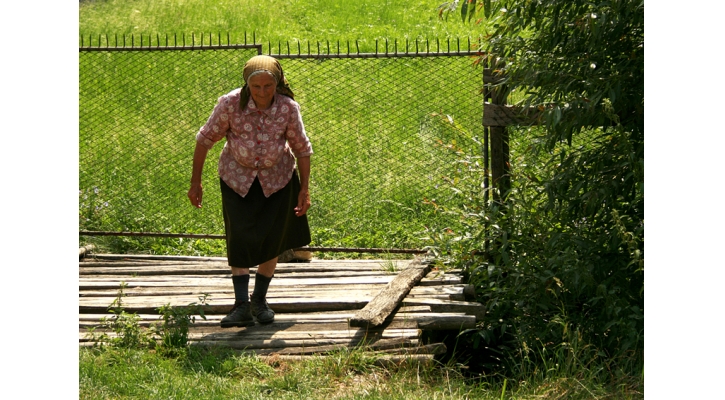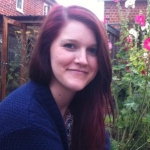Holbav - So Close, Yet So Far
The small village of Holbav is only twenty minutes away from the city of Brasov but the trouble it takes to get to it makes it seem much longer. It is as though the village does not want to be found.
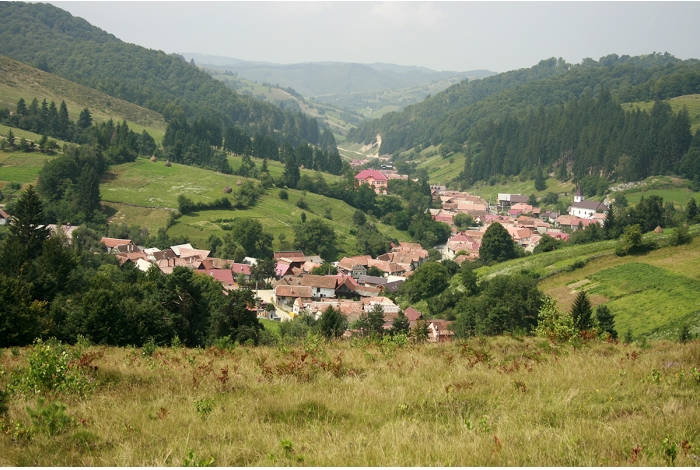
The village of Holbav seen from the hills. Photo by Ana A. Negru
There are no signs for it and we considered several identical track roads, not knowing which one to take. We had to ask for directions several times before we found the right one. Holbav is ringed by hills, which makes it difficult to enter. We tentatively negotiated tiny roads that clung to the edge of the hills on a swelteringly hot July day and that was hard enough. In the winter the roads are extremely difficult to drive on.
The hills that surround Holbav insulate it from the outside world and provide a stunning backdrop to the village. The houses nestle in the valley like crumbs gathered in the folds of fabric. This is where the majority of the village lives, about two hundred families. Another hundred families are scattered throughout the forbidding hills.
When we entered the village all was peaceful, the only sounds we heard were the crowing of a rooster and the bubbling of a narrow stream that runs parallel to the road. Three cows meandered down the road, occasionally stopping to sample the hedgerows. The only signs of modernity were the few cars parked along the side of the track road and the tiny local shop which inevitably sells coca cola.
In the centre of the village is the ridiculously picturesque church. It is a small white building set slightly apart on top of a hill and framed by a blossom tree. The inside is blessedly cool on such a hot day. The walls and ceiling are painted blue with murals of saints looking down. The church has a timelessness to it and we felt it must look much the same as it would have in 1861 when it was built. Just when we were feeling we had stepped back in time we met the young priest, Stefan Spirchez. He is only in his thirties and brings a youthful air to the church and the village; he even has facebook which he uses to keep in touch with his family abroad. He informed us that nowadays a lot of younger people are joining the priesthood. Unlike in other western countries, which in recent years have been turning away from the church, faith in Romania is still strong. This is especially true in Holbav; the church’s position in the centre of the village symbolises its position in village life. The majority of the families in the village attend, though it is harder for the people who live on the hills to make it in. Approximately seventy percent of people on the hills attend.
Life on the hills is hard; it is not unusual for people to have to walk for two hours to get to church or school. Even when they can get to church they will usually leave a family member behind to take care of their animals as most have small farms. They also have to beware of wild animals; there are bears and wolves living in the hills. We met a young boy of ten who lives on top of one of the nearer hills. He told us of his uncle who was in the woods near his house one winter when he was chased by three wolves. He only escaped them by climbing a tree and waiting up there until they left.
The boy lives on a small farm where they keep pigs and poultry, his job is to feed the dog and look after the chickens that scratch in the ground as we talk. He enjoys living in Holbav and riding his bike through the hills. But he doesn’t often leave the village; it is quite difficult, especially in the winter. When it snows they have to dig a pathway all the way down to the bottom of the hill and maintain it at all times to make sure they can leave the house. Also, the town hall provides a special car to clear the main paths and roadways in the hills and to grit them to make it easier to access.
The hills, though beautiful, make for a hard life in Holbav. Yet, maybe it only seems that way to our western eyes, for the inhabitants it is the norm. As if to prove this point we met an elderly woman going up the hill as we were on our way back down. The short walk up and down the hill to the young boy’s farm had left us gasping for breath and gulping from water bottles, but she was quite at her ease. She had been up the hill stacking hay, done the traditional way by hand with a pitchfork. She needed a longer pitchfork so she had just come down the hill to get one and was on her way back up again. All this was done in the midday sun and she showed no sign of tiredness, though she was stooped with age.
We watched her go back up the hill in admiration; not only for her but for the whole village who do without the modern comforts which we are so used to. It seems the hills, that create such a hard way of life in Holbav, are actually protecting it from the influences of the outside world. In doing so they are preserving a way of life which may be fast dying out.
Text: Victoria Richman
Photos: Ana A. Negru



